| 23-8-2017 | PowertoPay – Unified Post | Sponsored content |
 Facturis, a partner of UnifiedPost, is an online platform that helps to optimize the financial situation of small and medium-sized enterprises in the Netherlands. The platform facilitates a more efficient flow of incoming and outgoing invoices, debtor management, retrieval of digital debit authorizations, dynamic discounting and dynamic working capital credit. In this interview, Nico Ten Wolde, CEO of Facturis, is telling more about developments in the financial technical (FinTech) world.
Facturis, a partner of UnifiedPost, is an online platform that helps to optimize the financial situation of small and medium-sized enterprises in the Netherlands. The platform facilitates a more efficient flow of incoming and outgoing invoices, debtor management, retrieval of digital debit authorizations, dynamic discounting and dynamic working capital credit. In this interview, Nico Ten Wolde, CEO of Facturis, is telling more about developments in the financial technical (FinTech) world.
How did Facturis originate from the Rabobank?
Nico: “Rabobank started a strategic orientation in 2010 to increase its added value and uniqueness for its business customers. Rabobank wants to provide services within the customers’ business processes whenever and wherever they are needed. Where Rabobank has traditionally focused on offering products such as transactions, finance and insurance, she wanted to offer services to support the full order-to-cash flow process of her customers. This goes further than the execution of transactions and the provision of funding. By offering different services that work in synergy on one platform, the customer has lower operating costs and a lower need for external financing. In order to achieve this, Rabobank has established a partnership with UnifiedPost in the form of Facturis. UnifiedPost delivers the invoicing platform technology.”
What is the target group of Facturis? What do you do to connect the product to this target group?
Nico: “Facturis focuses on the business market, with the primary focus on small and medium-sized enterprises (SMEs). These types of organizations need to obtain services from many different parties in order to optimize the financial and administrative processes. Because they buy services from different parties, there is insufficient insight into and grip on the overall financial process. By integrally providing services from various partners on one platform, we give entrepreneurs more insight into their financial situation. That goes further than sending invoices – it’s about getting bills paid as quickly as possible.”
Fin Tech initiatives – what changes?
Everyone talks about the changing role of the banks, partly through the FinTech initiatives. What do you think are the things we already notice?
Nico: “What I see is that 10 years ago a bank was the only place you would consider for financial services, this is no longer always the case. Think of FinTech parties like Adyen, which offer a wide range of financial products from banks and other financial institutions on a platform. The customer no longer deals directly with a traditional bank. In addition, we see a strong growth of (crowd) funding platforms. The financing is no longer obtained through a bank. More recently, several blockchain initiatives and the oncoming implementation of PSD2 will create new opportunities for players outside the traditional banking world.”
Why do you think banks will increasingly work with FinTech companies? What is the benefit for the banks?
Nico: “On the one hand, banks often have to deal with complex legacy systems which limit the possibilities to quickly implement new solutions. On the other hand, banks have to deal with implementing and maintaining new rules and regulations with the current processes. This makes it almost impossible to quickly implement innovations. FinTech companies can quickly launch new concepts for specific target groups. Through cooperation with banks, the power of the existing brand and distribution channel is optimally utilized. A win-win situation for the customer, the FinTech company and a bank.”
What was the biggest success in Facturis?
Nico: “The launch of the pilot Invoice Credit. The Invoice Credit is a dynamic working capital credit that moves along in real-time with the (outgoing) invoice flow of a company. As a result, the entrepreneur does not always have to return to his bank to make an adjustment on his credit line. Due to the flexibility of InvoiceCredit, companies can streamline the flow of money, thus optimizing their working capital. InvoiceCredit fulfils the companies need for a credit that reflects fluctuations in the invoice flow and that grows along with the company.”
What is your biggest challenge within Facturis?
Nico: “Our biggest challenge is to maintain the speed you need as a FinTech to be successful and to be able to continue to innovate. Laws, regulations and legacy systems sometimes limit the speed to launch new services quickly within large corporate organizations. In cooperation with large organizations, such as banks, we face the challenge of balancing speed and adopting new banking services.”
How has such a creative thinking startup within the (traditional) bank been adopted so well?
Nico: “On the one hand, with a lot of missionary work within Rabobank in the form of presentations and writing many memo’s to convince the right stakeholders inside and outside the Rabobank. On the other hand, the arrival of Wiebe Draijer (Chairman of the Board of Rabobank) helped us greatly with the adoption of Facturis within the Rabobank. With the establishment of a FinTech & Innovation department, Rabobank made a clear choice for the adoption of FinTech companies in the future.”
What do you think is the most successful FinTech initiative in the market?
Name 1 launched and 1 that has not yet been launched.
Nico: “Launched: Kabbage: Kabbage is an American FinTech that can assess a consumer’s or SME’s financing request within a few minutes.
Not launched: Easytrade, an innovative currency hedging solution for hedging currency risks of (international) companies. Easytrade is a new FinTech initiative created by Rabobank Moonshot Program, an internal acceleration program aimed at realizing the advancing ideas of employees.”
What do you think are the most important FinTech developments in the near future?
Nico: “In the coming years, I see major changes in risk management. Through the application of AI and machine learning, we are able to better estimate risks and utilize opportunities with a much larger predictive ability. This has a positive impact on customers, we can deliver services exactly when the customer needs them. In addition, integrating blockchain initiatives and virtual currencies within the financial sector will take a huge run. With the implementation of PSD2, it is possible for FinTech companies to combine the old world and the new world. This allows for gradual adoption
of these new developments for customers.”

PowertoPay – Unified Post
[button url=”https://www.treasuryxl.com/community/companies/powertopay/” text=”View company profile” size=”small” type=”primary” icon=”” external=”1″]
[separator type=”” size=”” icon=””]
 Onderstaand een kort verslag van ons Treasury year-end meetup-event van eind 2017.
Onderstaand een kort verslag van ons Treasury year-end meetup-event van eind 2017. 

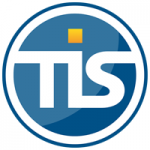 The DACT (Dutch association of Corporate Treasurers) will be holding their annual Treasury Fair in Noordwijk at the Hotel van Orange on 23rd and 24th November 2017 – the most important annual treasury event in the Netherlands. Discover treasury best practices, learn about the latest trends and exchange experiences. It will contain 9 practical workshops spread out throughout the day on topics including, among others, trade finance, supply chain finance, liquidity forecasting, cyber security and the Blockchain. There are more than 50 exhibitors present at the Trade Fair including Treasury Intelligence Solutions GmbH- a partner of treasuryXL.
The DACT (Dutch association of Corporate Treasurers) will be holding their annual Treasury Fair in Noordwijk at the Hotel van Orange on 23rd and 24th November 2017 – the most important annual treasury event in the Netherlands. Discover treasury best practices, learn about the latest trends and exchange experiences. It will contain 9 practical workshops spread out throughout the day on topics including, among others, trade finance, supply chain finance, liquidity forecasting, cyber security and the Blockchain. There are more than 50 exhibitors present at the Trade Fair including Treasury Intelligence Solutions GmbH- a partner of treasuryXL.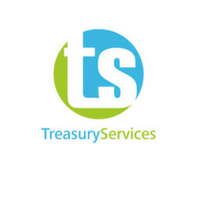 The DACT (Dutch association of Corporate Treasurers) will be holding their annual Treasury Fair in Noordwijk at the Hotel van Orange on 23rd and 24th November 2017 – the most important annual treasury event in the Netherlands. Discover treasury best practices, learn about the latest trends and exchange experiences. It will contain 9 practical workshops spread out throughout the day on topics including, among others, trade finance, supply chain finance, liquidity forecasting, cyber security and the Blockchain. There are more than 50 exhibitors present at the Trade Fair including Treasury Services- a partner of treasuryXL.
The DACT (Dutch association of Corporate Treasurers) will be holding their annual Treasury Fair in Noordwijk at the Hotel van Orange on 23rd and 24th November 2017 – the most important annual treasury event in the Netherlands. Discover treasury best practices, learn about the latest trends and exchange experiences. It will contain 9 practical workshops spread out throughout the day on topics including, among others, trade finance, supply chain finance, liquidity forecasting, cyber security and the Blockchain. There are more than 50 exhibitors present at the Trade Fair including Treasury Services- a partner of treasuryXL. The DACT (Dutch association of Corporate Treasurers) will be holding their annual Treasury Fair in Noordwijk at the Hotel van Orange on 23rd and 24th November 2017 – the most important annual treasury event in the Netherlands. Discover treasury best practices, learn about the latest trends and exchange experiences. It will contain 9 practical workshops throughout the day on topics including, trade finance, supply chain finance, liquidity forecasting, cyber security and the Blockchain. There are more than 50 exhibitors present at the Trade Fair including Cashforce – a partner of treasuryXL, who are also presenting a Workshop.
The DACT (Dutch association of Corporate Treasurers) will be holding their annual Treasury Fair in Noordwijk at the Hotel van Orange on 23rd and 24th November 2017 – the most important annual treasury event in the Netherlands. Discover treasury best practices, learn about the latest trends and exchange experiences. It will contain 9 practical workshops throughout the day on topics including, trade finance, supply chain finance, liquidity forecasting, cyber security and the Blockchain. There are more than 50 exhibitors present at the Trade Fair including Cashforce – a partner of treasuryXL, who are also presenting a Workshop. Na de vorming van de euro is het toezicht op financiële instellingen en markten geïnternationaliseerd. Hierbij is het logisch om een ‘level playing field’ binnen de eurozone te realiseren om reguleringsarbitrage te voorkomen.
Na de vorming van de euro is het toezicht op financiële instellingen en markten geïnternationaliseerd. Hierbij is het logisch om een ‘level playing field’ binnen de eurozone te realiseren om reguleringsarbitrage te voorkomen.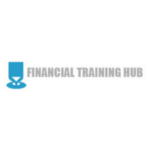
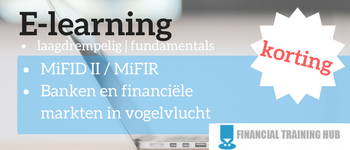 Ontvang via treasuryXL korting op deze e-learning en/of de
Ontvang via treasuryXL korting op deze e-learning en/of de  Zonder banken en financiële markten zou onze huidige economie en welvaart niet mogelijk zijn. En of u het nu leuk vindt of niet, banken waren en zijn onmisbaar voor onze moderne maatschappij. Iedereen doet, al dan niet bewust, dagelijks zaken met of via banken. Sinds de jaren ’80 heeft er een ongekende schaalvergroting plaatsgevonden in de financiële sector. Door deze schaalvergroting hebben banken zich ontwikkeld tot gigantische financiële supermarkten die een zeer uitgebreid aantal financiële diensten en producten aanbieden. Banken zijn tegenwoordig IT-bedrijven waar een grote groep specialisten werkt met beperkte financiële vakkennis.
Zonder banken en financiële markten zou onze huidige economie en welvaart niet mogelijk zijn. En of u het nu leuk vindt of niet, banken waren en zijn onmisbaar voor onze moderne maatschappij. Iedereen doet, al dan niet bewust, dagelijks zaken met of via banken. Sinds de jaren ’80 heeft er een ongekende schaalvergroting plaatsgevonden in de financiële sector. Door deze schaalvergroting hebben banken zich ontwikkeld tot gigantische financiële supermarkten die een zeer uitgebreid aantal financiële diensten en producten aanbieden. Banken zijn tegenwoordig IT-bedrijven waar een grote groep specialisten werkt met beperkte financiële vakkennis.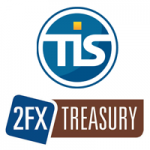 TIS and 2FX Treasury organize a webinar that we would like to bring to your attention. On October 19th between 04:00 and 04:45 PM TIS and 2FX Treasury will host: Corporate Payments Optimization: How to reduce complexity in your business. An interesting session for treasury professionals.
TIS and 2FX Treasury organize a webinar that we would like to bring to your attention. On October 19th between 04:00 and 04:45 PM TIS and 2FX Treasury will host: Corporate Payments Optimization: How to reduce complexity in your business. An interesting session for treasury professionals.  When they hear e-invoicing, companies often think that this is sending invoices by e-mail. However, e-invoicing is more than that. Not only sending the invoice is part of this, but also the electronic booking, payment and collection of the money belongs to this process. Electronic invoicing leads to a major save of costs. For the sender, but especially for the receiver. Since e-invoicing is digitalizing invoicing for the sender as well as the receiver, a PDF-invoice is not seen as electronic invoicing.
When they hear e-invoicing, companies often think that this is sending invoices by e-mail. However, e-invoicing is more than that. Not only sending the invoice is part of this, but also the electronic booking, payment and collection of the money belongs to this process. Electronic invoicing leads to a major save of costs. For the sender, but especially for the receiver. Since e-invoicing is digitalizing invoicing for the sender as well as the receiver, a PDF-invoice is not seen as electronic invoicing.
 Facturis
Facturis

